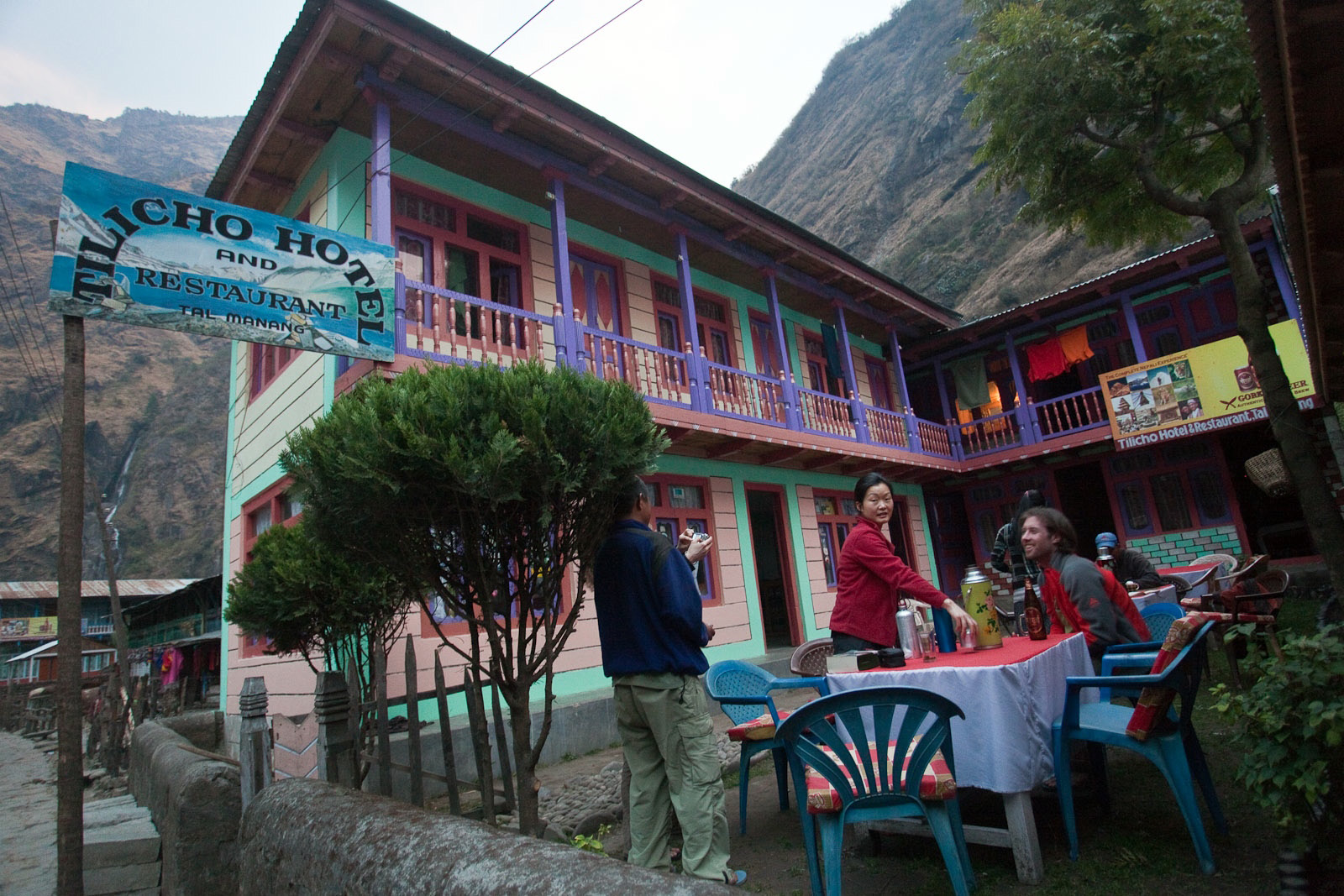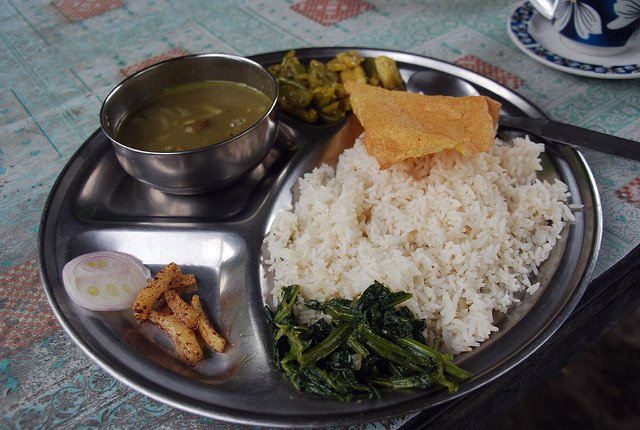How difficult is trekking in Nepal?
A trek in Nepal is more about endurance than anything else. You will be trekking most days and can expect to be on the trail an average of 5–7 hours per day. The lower elevations may be the most difficult as you cover the most ground and the temperatures are hotter. By the time you reach the higher elevations you will be in prime condition and the distances are shorter. People of many ages and ability successfully complete all the treks in Nepal—those who are strong willed and in good condition should have few problems.
How long is a typical trek?
The answer depends on the trek but the range is about 1–3 weeks. The quickest way to get up close and personal with the big mountains is the Annapurna Sanctuary trek, which can be completed from Pokhara in as few as 8 days. Longer treks in remote regions such as Makalu Base Camp can take three weeks or more. The Everest Base Camp trek takes 14–17 days.
You will also want to spend a couple of days in Kathmandu before your trek getting your bearings straight and making final preparations (more if you haven’t pre-booked a guide). And try to leave a cushion after your trek in case things take longer than expected.
What is the best time of year for trekking in Nepal?
Peak season is the fall months of October and November when the air is clear and the mountain views are best. Temperatures during this time are ideal for trekking—warm at lower elevations and cool up high—and the conditions are relatively dry. Along with the good weather comes the biggest crowds, felt from the bustling streets of Thamel to the trails themselves.
The temperature drops during the winter months but the air remains clear. If the weather is on your side, the first half of December can be epic with fantastic views and greater solitude. Be aware that once winter arrives the mountains slow down–high elevation trekking becomes treacherous and teahouses may close.
The second most popular time of the year to trek in Nepal is the spring season from late February to mid-April. Temperatures are as good as the fall and the crowds are smaller, but you can expect more haze and precipitation, particularly at lower elevations. Mountain views should be clear up high but things can get socked in down low.
Trekking in Nepal from May through August is best avoided. The monsoon months bring heat, clouds and rain, limiting the mountain views and creating messy trails and ground transportation headaches. One possible exception for hiking during the monsoon is the dryer Mustang region.
What is a teahouse and what is a teahouse trek?
Along the more popular trekking routes an infrastructure of teahouses has been built to accommodate the annual influx of hikers. These rustic mountain lodges range in size and comfort but a few dollars will get you a simple private room with two double beds (bring your own sleeping bag). It’s generally understood that you will eat in the restaurant of the teahouse you are staying in.

People often ask which treks are teahouse treks and whether camping is an option. For the two most popular Nepal treks—Everest Base Camp and the Annapurna Circuit—the teahouses are of a high standard and there is no real reason to camp along the main route. It's technically possible to camp in some of the villages but it doesn't make much sense. However, if you intend to take side trips on these popular treks they may require camping or camping may be a more viable option.
The treks that receive less volume, such as Manaslu and Mustang, do have some teahouses but the infrastructure is limited. The teahouses are generally more primitive and there are villages that only have a handful of rooms. For these treks you should definitely bring camping equipment, which will give you the freedom to make the decision on the trail. On our trek around Manaslu, we spent four total nights in teahouses, mostly when the weather was bad, and camped for the other thirteen nights.
It also comes down to a matter of preference—some people prefer teahouses and others prefer camping. if you go on trek that accomdates both, the decision will be yours.
Is it safe to travel to Nepal?
Nepal is under a constant cloud of political uncertainty as has been for years. The U.S. Department of State and other governments urge caution when traveling to Nepal, often in the form of official travel warnings. Travelers should read these warnings and exercise caution as they would before traveling to any other country.
After significant due diligence before my recent trip to Nepal, I came away reasonably confident that Nepal is safe for trekkers. A number of knowledgeable people were unequivocal in their opinions that trekking in Nepal is mostly unaffected by politics. I booked our tickets after hearing from two fellow Coloradans who were in Kathmandu preparing for a trek when the King was overthrown. Their advice was to go and that, “everything will be fine…just don’t burn tires in front of the Royal Palace.”
As with any foreign country, use good judgment and do your part to ensure that you have a safe trip. Solo trekkers are most at risk for a number of reasons and it’s best to go with a guide. Don’t walk around the streets of Kathmandu late at night (taxis are extremely cheap) and avoid large crowds. Petty theft can occur at lowland villages including from the tents of unsuspecting trekkers.
For those who decide to make the trip, the number of people trekking in Nepal remains relatively low compared to years past and it’s a great time to go.
Do I need a trekking guide?
The short answer is that a guide is not required on the most popular treks but it is recommended. For more on this topic see Switchback Travel's article: Nepal: Do I Need a Trekking Guide?
What is the food like in Nepal and on the trek?

Thamel in Kathmandu has a variety of food options and you should be able to find just about anything. While trekking you will become all too familiar with dal baht, the traditional Nepalese dish consisting of rice, lentils, and seasonal vegetables (meat is often available too). Dal baht may not be your first choice for a post-trek meal but genreally it's tasty and the portions are generous, making for happy trekkers.
You won’t regret bringing a box of protein bars and vitamins from home. Dal baht provides carbs and some protein but isn’t exactly packed with nutrition; bars make a great snack on the trail or backup for a less than stellar meal. Snickers are ubiquitous in the villages and serve the same general purpose.
How can I leave the smallest environmental footprint when visiting Nepal?
The best thing you can do while visiting Nepal is to pack out everything that you pack in. Sadly, littering is still widespread in Nepal and don’t be under the impression that your trash is getting hiked out from the mountains even if placed in a receptacle. Make sure to bring a water purification system so that you don’t need to rely on plastic bottles. You will also notice that a small proportion of inconsiderate trekkers before you have left trash behind at high camps, a chronic problem in the Himalayas. It may be tempting to lighten your load before slogging over a 17,000-foot pass but resist the temptation and do your part in keeping the Himalayas beautiful.
Nepal Visa Information
A passport and visa are required to enter Nepal: travelers may obtain visas prior to travel or purchase fifteen-day multiple-entry visas ($25), one-month multiple-entry visas ($40), or three-month multiple-entry visas ($100) upon arrival at Tribhuvan International Airport in Kathmandu. It is not necessary to obtain a visa in advance—the process upon arrival is straightforward and this is how the majority of travelers do it. Bring a healthy stack of passport photos to Nepal and you will use a number of them for your entry Visa.
For those who still wish to obtain a visa prior to travel, visas and information on entry/exit requirements can be obtained from the Embassy of Nepal at 2131 Leroy Place NW, Washington, DC 20008, telephone (202) 667-4550 or the Consulate General in New York at (212) 370-3988.
Nepal Health Information
For the most current Nepal health information see the Center for Disease Control and Prevention webpage for Nepal. You should purchase travel health insurance that includes emergency evacuation (read the fine print as it may pertain to trekking). You should also visit a travel clinic a few months before departure to get the relevant immunizations and medications. Buy a good water purification system back home, not in Kathmandu.
Travel Tip: A great way to improve your odds against stomach problems during your trip is to eat vegetarian. On Nepal treks you can often find fresh eggs in the villages for breakfast which will help provide protein.
